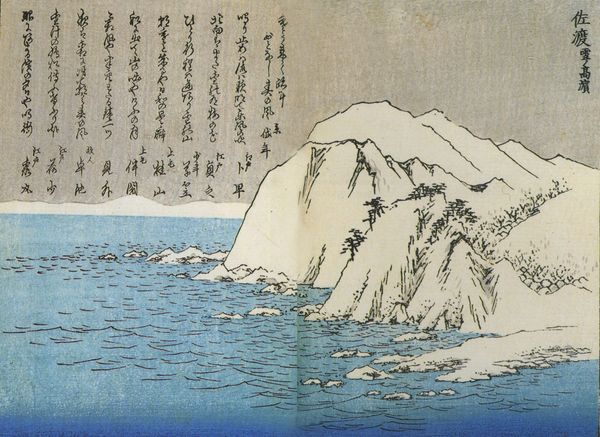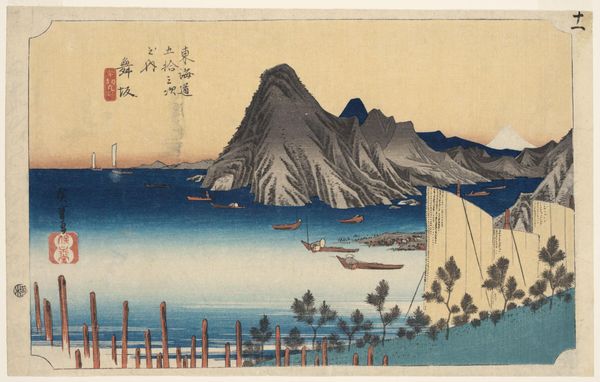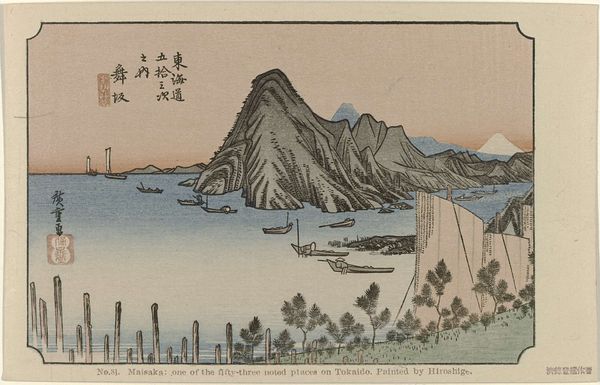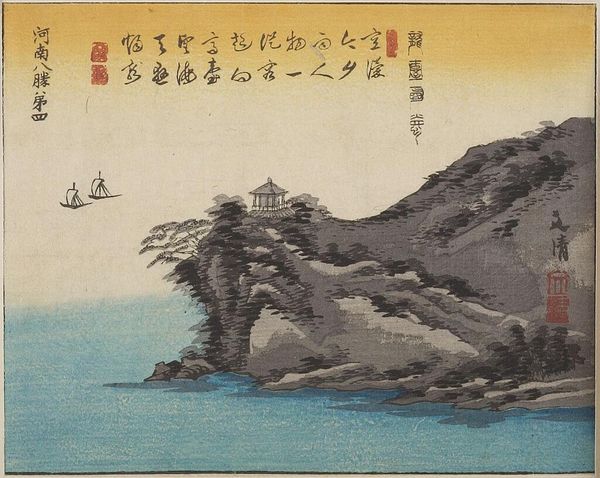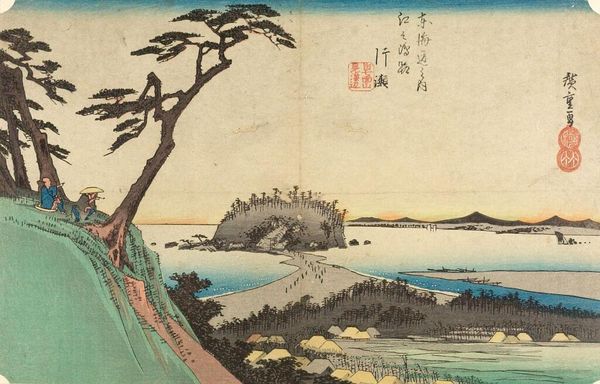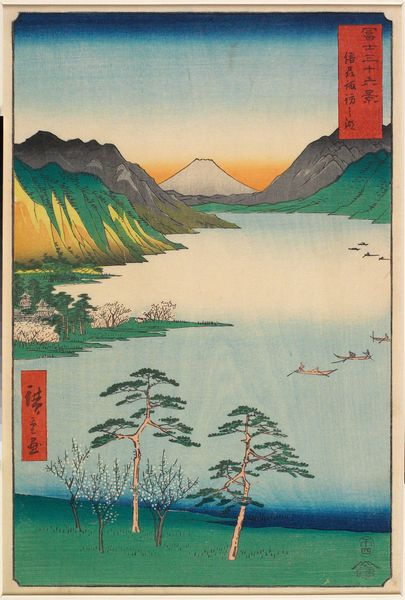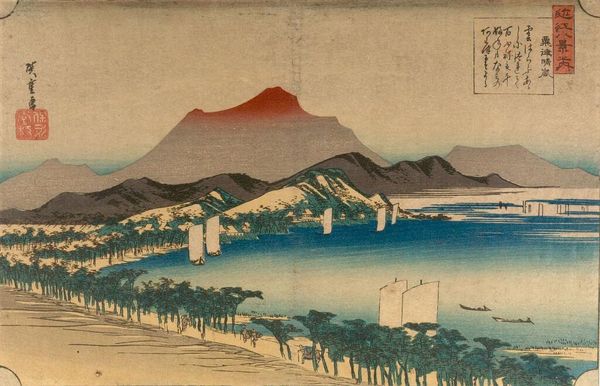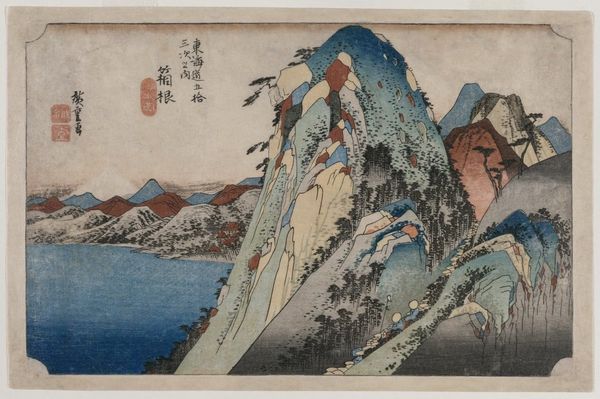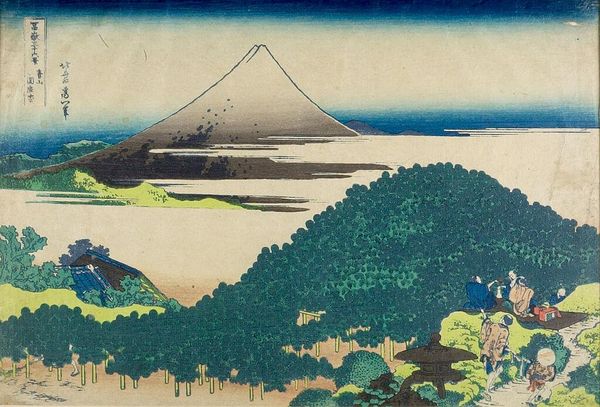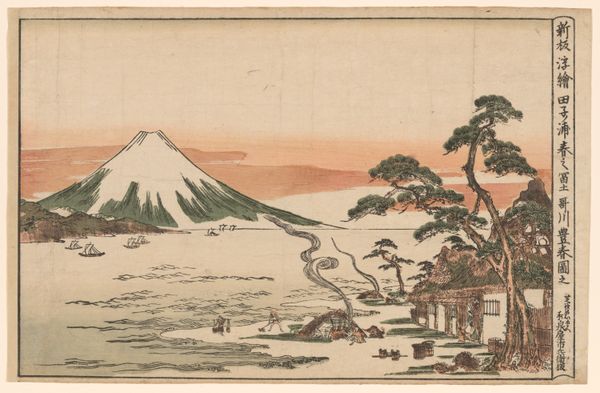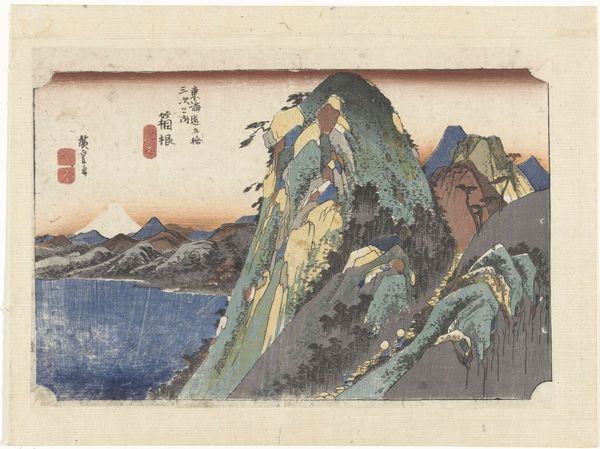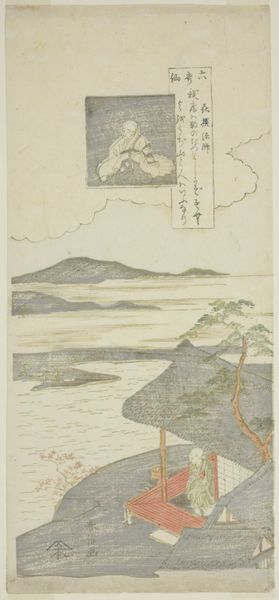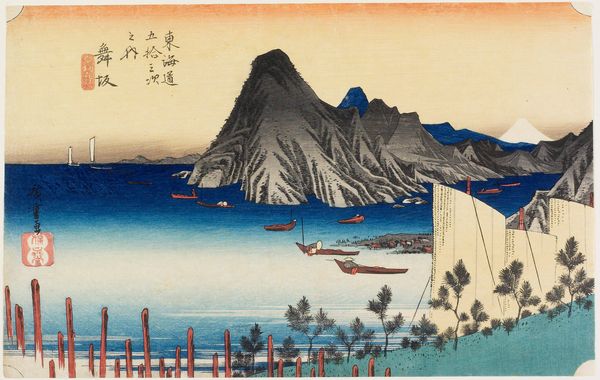
print, watercolor, woodblock-print
#
water colours
# print
#
asian-art
#
landscape
#
ukiyo-e
#
watercolor
#
woodblock-print
Copyright: Public domain
Curator: Looking at this print, "The Sea with Mountains," crafted in the style of Ukiyo-e by Toyota Hokkei, what strikes you first? Editor: Immediately, it's the solitary nature of the landscape. That single, imposing mountain emerging from the sea. It exudes a feeling of stoicism, almost isolation. What cultural context does Hokkei bring to this scene? Curator: Ukiyo-e prints, often depicting landscapes, played a crucial role in shaping how people perceived nature. In the Edo period, representations of natural wonders helped solidify political power while simultaneously acknowledging a Shinto respect for the natural world. Consider, too, how mountains like these could embody ideas of masculinity and endurance. Editor: I can see how those traditions would inform Hokkei's artistic choices. Mountains frequently serve as potent symbols. They signify permanence, strength, a connection to something ancient and powerful. In many Eastern cultures, the mountain represents a bridge between the earthly and spiritual realms. Does this resonate with how it would have been seen by Hokkei's audience? Curator: Absolutely. Landscapes are not passive reflections; they're actively engaged with culturally. Hokkei's choice to represent this seascape using a visual vocabulary familiar to people emphasizes a broader socio-political ideology. He is working within the canon and expanding on its language. This can be seen even within the scale, suggesting something much greater than humanity itself. Editor: It makes me wonder about the intentionality of such stark colors— the blue, the green and the small gradations of reds and yellows suggesting a sunrise or sunset. It emphasizes, for me, a liminality; the border between night and day, land and water. Even the addition of text on the left could point us to further stories being written and imagined around this place. Curator: That's an insightful observation about liminal spaces. In some contexts, those places can signify liberation—breaks from oppressive social structures. However, one may question whether Hokkei actually intends for such disruption given the established nature of his other content and the visual style itself. Editor: Ultimately, whether intentional or not, the symbolic power persists. Understanding what these natural elements signify, unlocks something more for me as I contemplate the historical and social landscape from which it emerged. Curator: And considering the historical and cultural influences— from visual tradition to artistic interpretation—allows us a richer understanding. It reminds us of the power of seeing as a cultural construct that should continuously be unpacked and challenged.
Comments
No comments
Be the first to comment and join the conversation on the ultimate creative platform.
